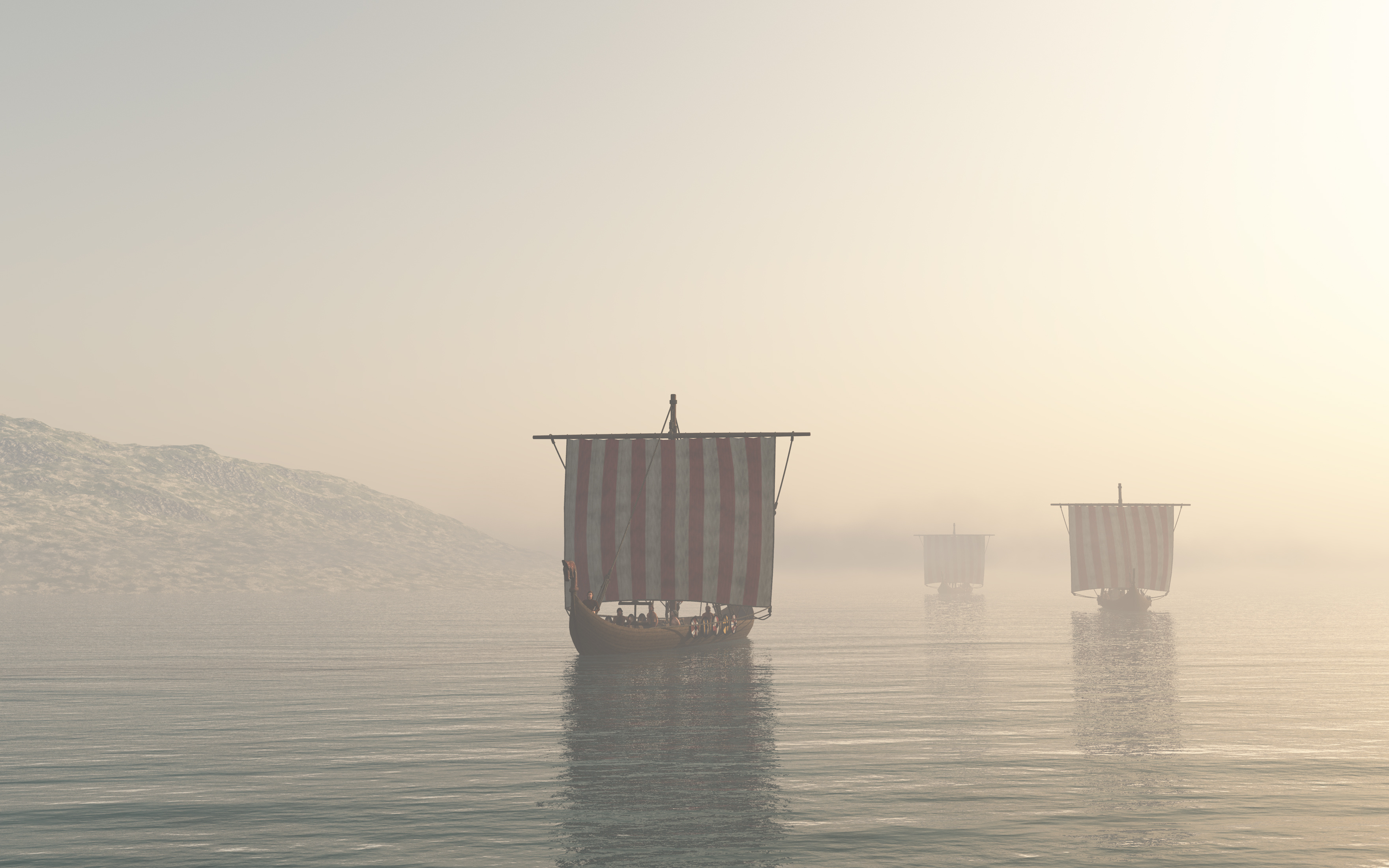
Vikings did not have superior weapons, battle techniques, or leadership when compared to those they fought. Norse Warfare: A Portrayal of Combat, Raids, and Plunder in the Viking Age by Martina Sprague indicates it was primarily their tactics that give them an advantage. Fast, low-draw ships which could be rowed to shore then beached anywhere gave them an advantage which they constructed their tactics around. They also gained key intelligence information from trading so they know where the money was and what kingdoms were in distress.
Raid strategy
The Vikings did not have vastly superior weapons or better organized forces or better battlefield strategy or better leadership than their opponents. Why were they so successful as raiders and plunderers?
I am slowly realizing that their ships gave them the edge. They capitalized on their slight technological advantage, adapted their tactics accordingly, chose carefully when to engage and when to retreat, and therefore had a massive advantage when they chose to engage.
Book points out monasteries were usually poorly guarded, primarily because the organized armies that existed were usually fighting other armies. Most cities and most monasteries were close to a river or ocean.
With the nimble, low visibility ships they used, the Vikings could easily beach their ships on a shore and quickly get to their target. They could quickly make an escape after a raid or retreat if they encountered resistance.
Their no-notice arrival gave defending forces very little time to gather so the Vikings could raid and be gone before the defenders could rally. If the locality had sufficient advance notice to gather the militia, the Vikings could just get back in the boats, leave, sail a day or two up or down the coast, then try again.
With the low draft of Viking ships and the ability to row after dropping the sail they could arrive with little notice. They also could navigate far upriver and anywhere on the coast since did not need a harbor or pier. This gave them tremendous flexibility.
Text points out Viking strategy is similar in many ways to current Special Forces. Both use special techniques such as high mobility, maneuverability, surprise, speed, and flexibility which are unavailable to large units. Those strategies are particularly available to forces on the offence and not particularly valuable for those on the defense.
How did the Vikings know where to raid?
For quite some time I have wondered how the Vikings gathered such incredible local intelligence that they knew where the riches were located (monasteries), specifics of location for large villages, and regional political turmoil. They had an amazing ability to hit rich targets, near the water, and particularly when there was political turmoil or war in the kingdom.
Book points out there were plenty of Scandinavians who were merchants and traders. That means there were peaceful Scandinavian not-Vikings-this-year doing trade in villages and towns all over the coasts, along rivers, and inland across England, Ireland, and all over the continent.
Those merchants could easily fill in fellow countrymen they met along the way or their friends and neighbors when they got back home to Scandinavia.
Those merchants could also decide to become Vikings in the winter and advise their local yarl or nearby sea-king where to lead the raiding party or where to go to find lots of undefended goodies.
Aha, the information gathered by the merchant would be invaluable to Vikings planning a raid.
Volume of raids
After the attack on Lindisfarne in 793 A.D. there was essentially 40 years of peace before the Vikings hit England hard.
After that the Vikings hit England essentially every year, according to the text.
Tally of raids over the next 200 years according to the book were:
- 214 times – France
- 94 times – Great Britain and Ireland
- 34 – Netherlands, Belgium, Luxembourg
- 9 – Spain
- 6 – Portugal, Morocco, Italy, Turkey